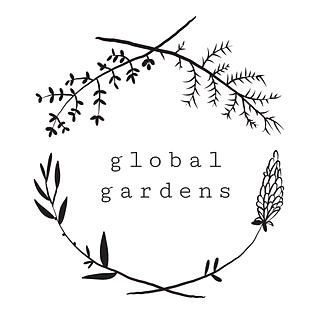Bumble Bee Watch
- Global Gardens
- Sep 19, 2023
- 4 min read
Updated: Oct 3, 2023
In this blog Sally, our local bumble bee enthusiast shares her findings from the first bumble bee walk at Global Gardens...
This summer marked my first ever visit to Global Gardens. I live nearby and had always intended to go, but it wasn’t until my daughter and I attended (and loved!) this summer’s Forest School that I actually got to see the site and get a look at its wonderful biodiversity.
In my spare time I’m an avid wildlife gardener and can spend hours searching for bugs in my garden and in any other wild space in which I find myself. So while we threw ourselves into the activities of Forest School, I inevitably found myself drawn to the many creatures I’d see as we walked round the site, harvesting produce or collecting flowers depending on the day’s activity. I was impressed by the biodiversity I could see and the presence of so many wildlife friendly plants, including those often considered as weeds, such as ragwort.
I regularly walk a transect and record bumblebee activity as part of the Bumblebee Conservation Trust’s BeeWalk project, and so I offered to have a look around the Global Gardens site to see what I could see, and to start creating some record of what is found there.
Now, I’m by no means an expert – more of an enthusiastic amateur – but I hope I am able to give an interesting snapshot of what I found.
It was a warm and sunny day when I looked around – a nice change after weeks of rain! The site is broadly split into a separate orchard area, the Forest School section, and the general allotment area. I started off in the orchard area which remained largely unmowed and wild, seeing numerous crickets and wolf spiders in the grass, all scattering indignantly at my presence. Hoverflies were in abundance, including the large hornet mimic hoverfly, but I was also really pleased to see a Blood bee, a cleptoparasite of furrow and mining bees (it lays its eggs in their nests).

Slightly blurry Blood bee!
Honey bees and common carder bees were also present, along with speckled wood and red admiral butterflies, although my highlight in the orchard was spotting a solitary wasp making its way through the grass gripping tightly onto its prey - what looked like a crab spider.
The Forest school area was the place on the Global Gardens Site with which I was most familiar. As throughout the whole site, honey bees were the most abundant bee species, and I saw another common carder, but also spotted a male furrow bee (probably common furrow bee) on the Solidago at the entrance to the Forest school area. Wolf spiders were again abundant, but this part of the site has more footfall and less flowers, so there was definitely fewer creatures overall.
The rest of the site is a wonderfully wild allotment with crops growing alongside herbs, and other plants such as borage, nasturtiums, ragwort and tansy. Honey bees were absolutely abundant in this area, far outnumbering any other pollinator species that I saw, but this area had the biggest variety of other bees. In terms of bumblebees, this included a very large Garden Bumblebee (probably a Queen), 2 buff-tailed or white-tailed bumblebee workers (they are very hard to separate in the field!), four common carder bees, a male buff-tailed bumblebee, and two male red-tailed bumblebees. I saw a couple of different furrow bees, including males and females of (probably) the common furrow bee, and then also a much smaller furrow bee. The final solitary bees I spotted were a Yellow-faced bee, a leafcutter bee (which cuts little circles out of leave to make their nest cells!) and a plasterer bee – all very lovely to see!

Female plasterer (Colletes species) bee

Yellow-faced (Hylaeus species) bee
Hoverflies and solitary wasps were also abundant, including an ornate tailed digger wasp, and a male Ctenichneumon panzeri:

Ornate-tailed digger wasp

Ctenichneumon panzeri – male
I also spotted Peacock and small white butterflies and mint moths on this part of the site, as well as some beautiful crab spiders.

Crab spiders
It was lovely to see so much wildlife on a site that is so close to some of the busiest roads and built up areas in Cardiff, and to see how the process of growing food there is complementary to, and celebratory of the biodiversity of the site.
Full list
Orchard area
Wolf spiders (pardosa species)
Common carder bees (Bombus pascuorum); 1 x worker, 4 x male?
Honey bees (Apis Mellifera) – numerous
Hoverflies
Solitary wasps
Dock bug?
Crickets – numerous
Speckled wood butterfly
Red Admiral butterfly x 2
Hornet mimic hoverfly (volucella zonaria)
Blood bee (Sphecodes species)
Play area
Male furrow bee (probably common furrow bee) – lasioglossom calceatum/albipes
Common carder bee (Bombus pascuorum)
Wolf spiders (pardosa species)
Hairy shieldbug
Growing area
Honey bees (Apis Mellifera) – numerous
Garden bumblebee (Bombus Hortorum) – probably queen
Buff tailed/white tailed bumblebee (bombus lucorum/terrestris) – worker x 2
Common carder bee (Bombus pascuorum) x 4 (2 x worker, 2 x male?)
Red tailed bumblebee (Bombus lapidaries) – male x 2
Furrow bee (probably common) (Lasioglossom calceatum/albipes)
Furrow bee (small)
Plasterer bee (Colletes species) – female
Yellow-faced bee (Hylaeus species)
Leafcutter bee (Megachile species) – female
Peacock butterfly
Small white butterfly
Solitary wasp – Ctenichneumon panzeri – male
Ornate tailed digger wasp
Solitary wasps – numerous
Hoverflies – numerous
Crab spiders
Survey undertaken 23/8/23, 14.06 – 15.30
22 degrees Celsius
Sunny/cloudy












Comments